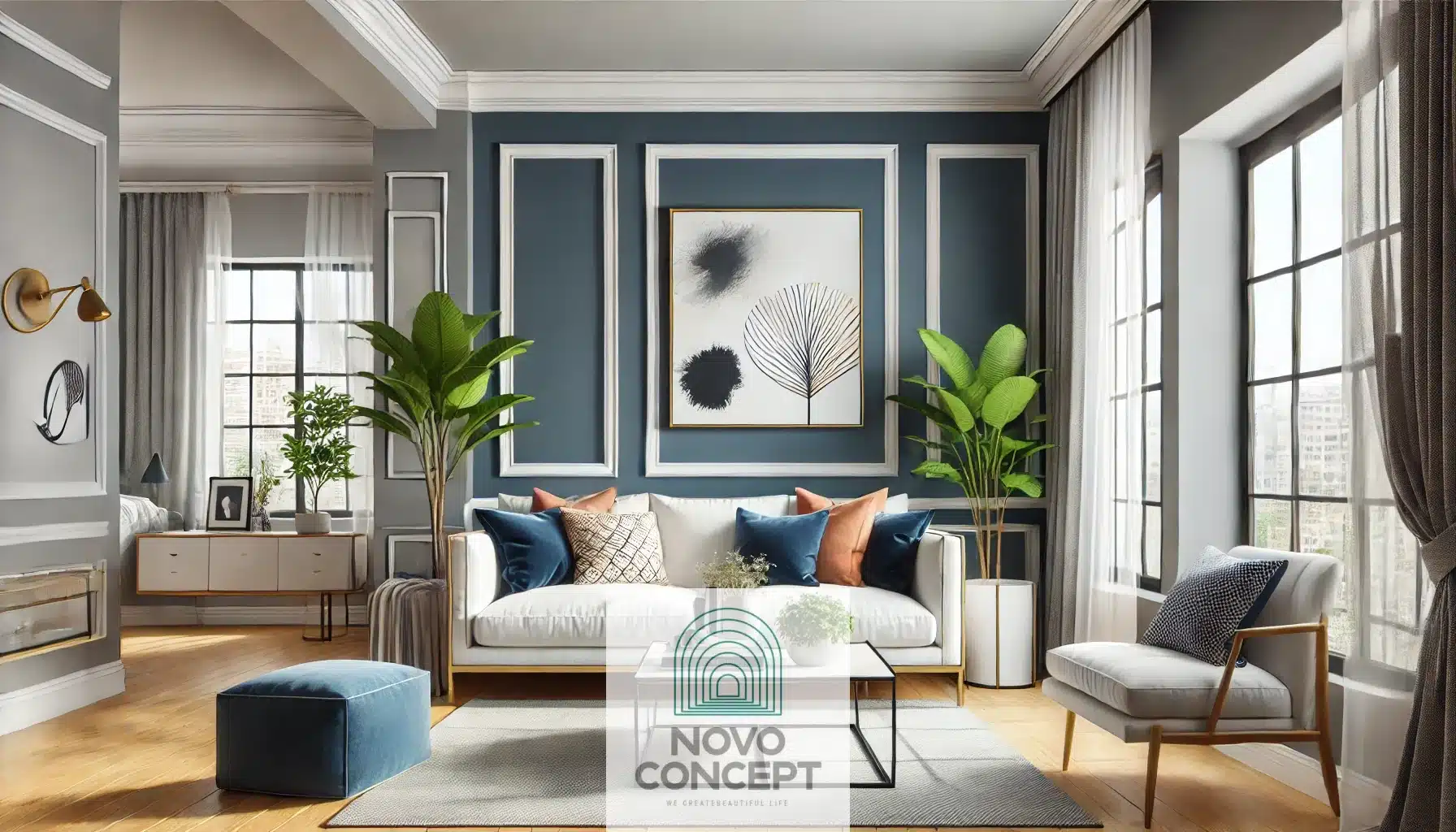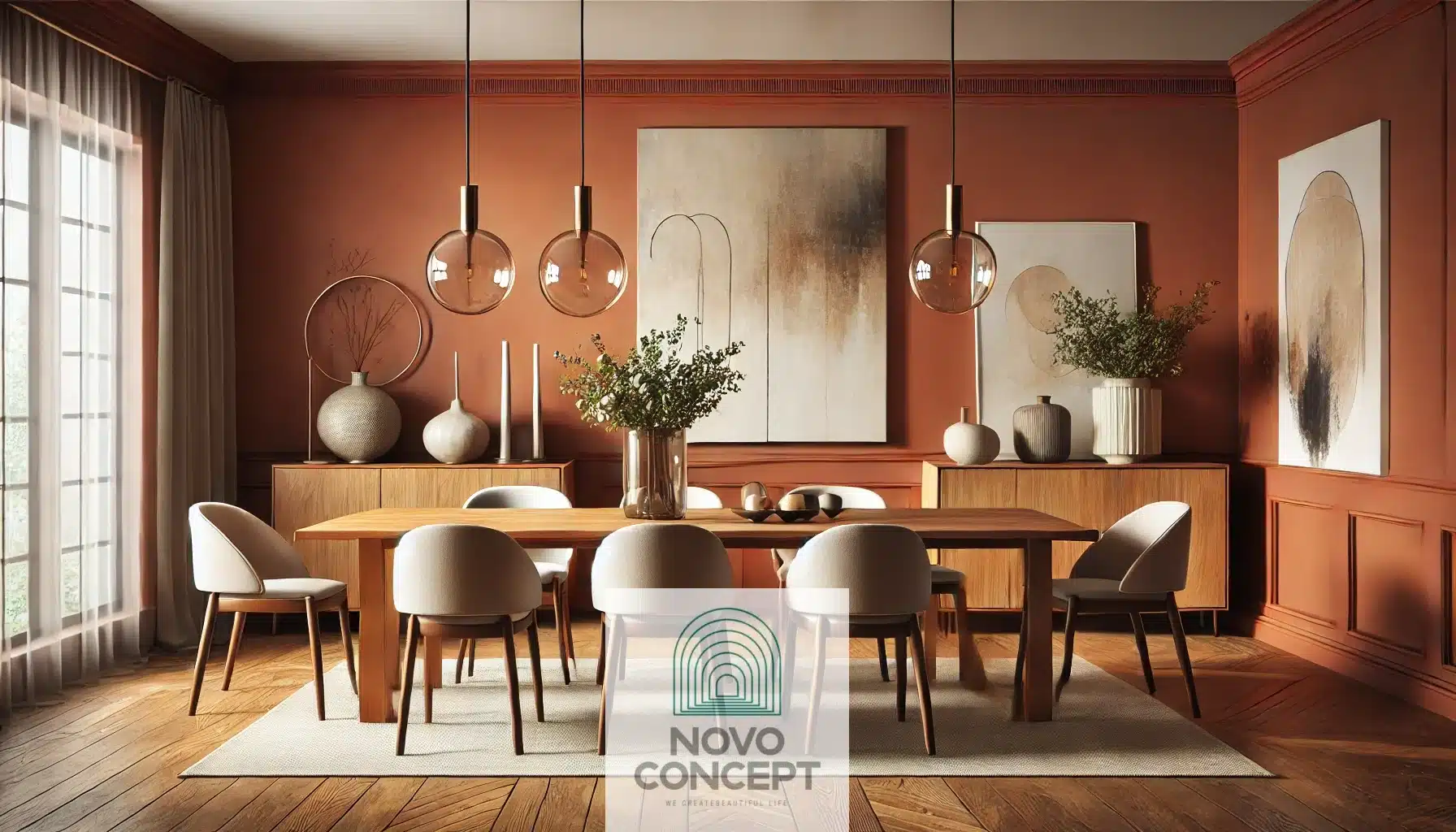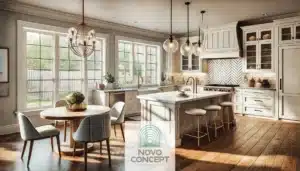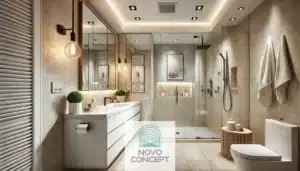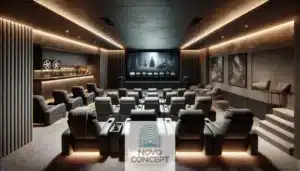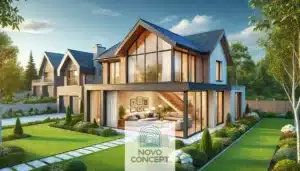Few tools in home improvement wield as much transformative power as a simple can of paint. The colors you choose for your walls can breathe new life into spaces, evoke emotions, and set the tone for your entire home. Beyond mere aesthetics, paint has the ability to redefine spaces through psychological, visual, and practical dimensions. Let’s explore how the right choice of color can awaken your living environment, providing beauty, personality, and purpose.
How Power of Paint Can Transform a Home
The power of paint is often underestimated in the realm of home improvement. It’s a versatile, cost-effective, and impactful way to rejuvenate your living spaces. Let’s dive into the many ways paint can work its magic.
Psychological Impact
Color is more than just a visual element—it influences our emotions, behaviors, and perceptions. By carefully selecting the right hues, you can craft an atmosphere that aligns with the purpose of each space in your home.
Creating Calm
Soft, muted tones like pastel blues, gentle greens, and light grays can foster a serene and calming environment. These colors are ideal for bedrooms, reading nooks, or spaces dedicated to relaxation. The soothing properties of these shades can reduce stress and promote tranquility, helping you unwind after a long day.
Energizing and Inspiring
Conversely, bold and vibrant hues like reds, oranges, and yellows infuse spaces with energy and warmth. These colors are perfect for communal areas such as the living room, dining room, or kitchen. They stimulate conversation, creativity, and a sense of vitality, making them great choices for gathering spaces.
The Psychology of Neutrals
Neutral colors like beige, taupe, and cream offer flexibility and timeless appeal. They act as a blank canvas that complements various styles and furnishings, creating harmony and balance. Neutrals also make a great backdrop for bold accent pieces, allowing you to adapt your decor as trends evolve.
Understanding the psychology behind color empowers you to design an environment that supports your emotional and functional needs.
Visual Manipulation
Paint is a dynamic tool for altering the perception of space, light, and architecture within your home. With the right techniques, you can visually transform any room to suit your preferences.
Creating Spaciousness
In smaller rooms, light colors such as whites, soft pastels, or pale grays can create an illusion of openness and airiness. These hues reflect natural light, making the room feel more expansive. For spaces lacking natural light, bright whites or warm neutrals can simulate a sunnier atmosphere.
Enhancing Coziness
Dark and rich tones—such as deep navy, charcoal, or forest green—can add intimacy and warmth to larger rooms. These shades envelop the space, creating a cocoon-like effect that’s perfect for dining rooms, libraries, or cozy dens.
Highlighting Features
Accent walls are a popular way to draw attention to specific architectural elements or introduce a focal point in a room. By painting one wall in a bold color or applying a unique texture, you can add personality and depth without overwhelming the space.
Camouflaging Flaws
Paint can also be used strategically to conceal imperfections. For instance, matte finishes minimize the visibility of wall blemishes, while darker shades can de-emphasize uneven surfaces.
Cost-Effective Renovation
Compared to extensive remodeling projects, painting is one of the most budget-friendly ways to refresh your home. It delivers a high return on investment, whether you’re preparing your house for resale or simply updating its look.
Affordable Impact
A fresh coat of paint can dramatically transform a room without breaking the bank. The cost of paint and supplies is minimal compared to replacing furniture or undertaking structural changes, making it an accessible option for most homeowners.
DIY-Friendly
Painting is a task that’s approachable for DIY enthusiasts. With the right tools and preparation, you can achieve professional-looking results, saving on labor costs. The process also provides a sense of accomplishment and personal connection to your home.
Beyond Walls: Expanding the Canvas
The transformative journey of paint isn’t limited to walls. Doors, trim, ceilings, and even furniture can benefit from a fresh coat of color.
Doors and Trim
Painting doors and trim in contrasting colors can create striking visual interest. For example, crisp white trim paired with a bold wall color adds a polished and contemporary look. Alternatively, black trim offers a sophisticated, modern edge.
Ceilings
Often overlooked, the ceiling is a canvas with great potential. Painting it a lighter shade than the walls can make a room feel taller, while a darker hue can create a dramatic and intimate atmosphere.
Furniture and Accents
Upcycling old furniture with paint is an excellent way to breathe new life into worn pieces. From colorful chairs to vibrant cabinetry, painted furniture can act as a statement piece and tie a room’s design together.
Personalization and Trends for Power of Paint
Paint is a versatile ally in adapting to evolving trends and personal style. It allows you to experiment with color schemes and express your individuality.
Staying Current
Interior design trends are ever-changing, and paint offers a low-commitment way to stay updated. From the earthy tones of terracotta to the resurgence of jewel tones, you can easily refresh your space to reflect modern aesthetics.
Self-Expression
Your home is a reflection of your identity. Whether you favor minimalist whites or eclectic patterns, paint provides a medium for creativity and self-expression. Accent walls, stencils, and murals are just a few ways to add unique character to your space.
Seasonal Updates
Changing the color of a room or adding accent pieces can also reflect the seasons. Warm and cozy hues in autumn or fresh pastels in spring keep your home’s ambiance aligned with the time of year.
Practical Considerations for Painting
Before embarking on a painting project, it’s essential to consider several factors to ensure success.
Quality of Paint
Investing in high-quality paint is crucial for durability, ease of application, and a polished finish. Premium paints often require fewer coats, saving time and effort in the long run.
Surface Preparation
Proper preparation is key to achieving professional results. Cleaning, sanding, and priming surfaces ensures that the paint adheres well and lasts longer.
Choosing Finishes
The finish of the paint—whether matte, eggshell, satin, or gloss—affects both aesthetics and functionality. High-gloss finishes are easy to clean and ideal for high-traffic areas, while matte finishes create a sophisticated, muted look.
Hiring Professionals
For complex projects or time constraints, hiring professional painters can ensure flawless execution. Professionals bring expertise, efficiency, and access to specialized tools that elevate the final outcome.
Conclusion of Power of Paint in home remodeling
The transformative power of paint goes beyond mere aesthetics. It’s a tool that influences mood, alters perceptions, and adds personality to your home. Whether you’re creating a tranquil retreat, energizing a communal space, or staying current with design trends, the right paint can elevate your living environment. By understanding the nuances of color psychology, visual manipulation, and practical application, you can unlock endless possibilities for self-expression and design. Let your imagination run wild, and watch as your home transforms into a masterpiece of color and creativity.

